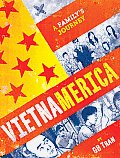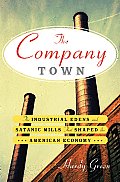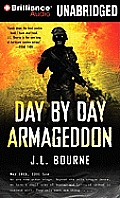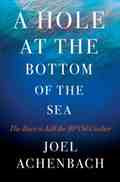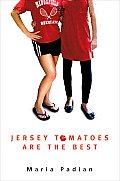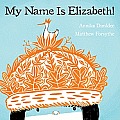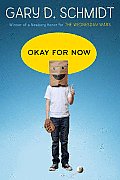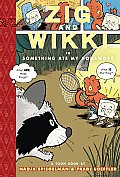Link to this review in the form of a comic strip by guest tagged graphic novel • biography
Link to this review by sarahhunt tagged history
From the rise of the Industrial Revolution in the U.S., some companies extended control of their employees through company-owned towns that housed them. From early cotton mills to candy factories and coal mines, chapters cover different motives like maintaining the moral fiber of the workers, policing what they did on personal time, preventing their escape to other industries and simply making money.
Why I picked it up: Washington state has a lot of company towns in its history, though they’re mostly out of company hands now. These include timber and mining towns and even a secret plutonium extraction site during World War II.
Why I finished it: The company presidents all had a vision of controlling their employees in some way, whether for good or bad reasons, something that almost never comes up in discussions of free markets and capitalism. (Some company towns were structured to keep residents from being represented in local government.) The book showed me in detail how big industries operated throughout the twentieth century, and how the growing power of workers and federal regulation changed what they could and couldn’t do.
I’d give it to: Cindy, my union’s council president and a union history buff because it is both informative and maddening. The author didn’t set out to chronicle the rise and fall of unions, but this thread runs throughout the book. Many employers tried to keep out union organizers or keep employees from voting for union representation. Practices eventually prohibited because of unions were initially defended by businesses: segregated and substandard worker housing, the use of child labor, mandatory twelve-hour shifts, and seven-day work weeks.
Link to this review by emilyjones tagged horror • audiobook
Witness the end of humanity as we know it by listening to spare journal entries. The narrator is an unnamed military pilot living in San Antonio who figures out that something more sinister is at play when a “flu bug” breaks out in China and spreads across the globe. Without emotion or question, he hoards food and ammunition and reinforces his home, creating a suburban bunker for the inevitable zombie armageddon.
Why I picked it up: I had to hear how the author, an active duty military officer who has flown more than “sixty combat missions over Iraq,” would face the undead.
Why I finished it: I like zombies but I generally don’t like war stories, so I knew this audiobook might be a challenge for me. But my love of all things survival-related took over, and I began to admire his soldierly, no-nonsense approach to facing the end of the world. It was easy to ignore unfamiliar military jargon because I just wanted the narrator to live to see the end of each day.
I’d give it to: Gail, because she can’t stomach the graphic grossness of The Walking Dead on TV, but might be able to listen to this stripped down account of a zombie apocalypse and let her imagination fill in all the gory details (or not).
Link to this review by flemtastic tagged nonfiction
There is big money in deep-sea oil drilling. This is why British Petroleum spent $525,000 a day renting the Deepwater Horizon oil rig from Transocean, and a million dollars a day to drill.
The well was already a disaster because of cost overruns, broken drill bits, and last-second strategy changes by bigwigs at the corporate office. Then a methane leak through the drilling pipe caused an explosion that killed eleven men, sank the rig, and sent about five million barrels (210 million gallons) of crude oil into the Gulf of Mexico. (BP was forced to set aside forty billion dollars to pay for damages and clean-up.)
Politicians as far up the ladder as President Obama sprang into action, or at least the appearance of action, because no one wanted to repeat George W. Bush’s Hurricane Katrina performance. The best minds in the nation worked twenty-four hours a day to come up with increasingly crazy methods to stop the black oil spilling into the Gulf of Mexico, such as detonating a targeted nuclear bomb. The well’s 5,000 foot depth made designing machines to do otherwise simple tasks like cutting a restraining bolt difficult. The pressure changed all the calculations because, for example, it caused gases in the crude oil to solidify and clog the nozzles that were attempting to draw off or direct the oil spilling into the Gulf.
While the author was impressed with the apparent focus on safety on the drilling rig, having seen all the signs, hardhats, gloves, handrails, and the like, some argued that BP’s safety culture focused on the individual, not the drilling. The book lays out the chain of small details that led to the worst oil spill in U.S. history, like the cement slurry manufactured by Halliburton not being able to contain methane gas, which started the rig fire, and the company ignoring differing results of pressure tests on the well.
Why I picked it up: I saw it in the Quick Picks section of paperbacks at my local library. (I always take a peek there on my way out.)
Why I finished it: Each plan for capping the well had possible negative outcomes which were worse than the already historic spill. There was a very real chance of “oilmageddon” — the capping of the well could have caused the entire seafloor to burst open with pressurized leaks of oil. Politics led to wasted money and rushed decisions, like the creation of temporary, man-made island barriers to soak up oil. They cost tens of millions of dollars, took months to build, changed eco-systems and soaked up little oil.
I’d give it to: My friend Rich, who would love that the whole spill could have been avoided, as stated in BP’s own report, if the blowout preventer had had sufficient charge in its batteries. Mikayla, who enjoyed Michael Lewis’s Liar’s Poker and The Big Short because, like this book, they also give behind-the-scenes looks at famous incidents through quirky characters.
Link to this review by geneambaum tagged graphic novel • picture book • fantasy
After one of the seven squat bears trades their cow for a magic bean, they nearly starve. Puss in Boots shows up at their door, looking for food, and offers to lose one of the bears in the forest (the one who made the bad trade) in exchange for his share of what they have. But the little bear doesn’t stay lost.
Publisher’s Rating: A All-Ages
Why I picked it up: Bravo is an amazing artist, and I liked the first volume in this series.
Why I finished it: Fairy tale mashups generally make me groan, but Bravo took this one in unexpected directions, from the unexpectedly skinny bears, with their ribs visible beneath their fur, to Little Red Riding Hood running away because she thinks a hungry bear has rabies.
I’d give it to: Denise, who would like the lesson the overweight Hansel and Gretel offer her kids: too much candy isn’t good for you.
Link to this review by flemtastic tagged coming of age
Henrietta (Henry) Lloyd is a gifted tennis player who just bageled another girl (beat her 6-0, 6-0) to become the tennis champion of North New Jersey. Her best friend Eva is there to support her even though she could care less about sports. Eva’s passion is ballet, and she’s highly skilled.
The two are split up when Henry goes to a private tennis academy in Florida and Eva enters a prestigious ballet school in New York. Henry discovers some things about herself and her relationship with her manic father, who can go ballistic at any moment. Eva struggles with weight issues as she tries to make it through the program to be selected a dancer at the ultra-competitive New York School of Dance.
Why I picked it up: I have read a lot of bad jokes about New Jersey (Q: What is the only thing that grows in Jersey? A: The crime rate.), so I wanted to read a book that shows Jersey pride. Friendship books are really big at my school, too, so I thought this might be a winner.
Why I finished it: Both girls have parents who are over-involved, to an unhealthy level, in their kids’ pursuits. The girls have an award they pass back and forth to whoever has the most embarrassing, out of control parent. They commiserate, and their friendship helps them get through situations like Henry’s dad loudly accusing the parent of a diabetic girl of coaching her during a match when he was merely checking her insulin levels.
I’d give it to: Chrissy, an athlete at my school, who would identify with the sacrifices required by both girls to become an exceptional athletes. Anjely, who would like Yolanda, the Cuban roommate of Henry’s who helps her stay centered at the tennis academy by sharing her life, culture and family.
Link to this review by geneambaum tagged picture book
A little girl named Elizabeth loves her name, but everyone calls her something else: Lizzy, Liz, Beth, or worse.
Why I picked it up: I’m a big fan of Forsythe’s Ojingogo.
Why I finished it: Forsythe’s art is striking in part becaues he uses three colors: orange, light blue, and black. And I love the moment when Elizabeth corrects everyone and announces her FULL name — she’s shown as a giant because she’s shouting.
I’d give it to: My friend Liz, of course. She doesn’t have grandkids yet, but I think she’ll have a good time reading it aloud when she does.
Link to this review by dawnrutherford tagged coming of age
Doug Swieteck is forced to move with his family to a small town where everyone views newcomers with suspicion. His father is an unpredictable drunk and his older brother finds trouble wherever he goes. Doug seems doomed to become a thug; it’s what most everyone expects. But when a librarian helps him realize he has a talent for drawing, Doug starts opening up his heart to kindness and other possibilities.
Why I picked it up: After much procrastination, I recently finally read Schmidt’s The Wednesday Wars and was blown away by his gift for exploring the emotional nuances and wonder of middle school boys.
Why I finished it: While I was in the middle of this book, I did a presentation for a nearby library system’s staff day about the 40 Developmental Assets for Adolescents, and how the little things adults do can make such a huge impact on teens. This book illustrates this point perfectly.
I’d give it to: Barb, who feels like teens invade the mall where she works. She has a hard time welcoming them because they put on a rough, protective front, but I think this book might help her open up a bit.
Link to this review by geneambaum tagged science fiction • graphic novel • science
Wikki (a robot) and Zig (a one-eyed alien) hunt for a class zoo pet in a wetland on Earth. They encounter flies, a frog, dragonflies, and a raccoon, and learn a few facts about them.
Why I picked it up: The boldly drawn, expressive characters on the cover.
Why I finished it: When Zig’s teacher contacts him about his late homework, there is a wonderfully odd variety of alien animals arranged on the table behind the teacher.
I’d give it to: My daughter, Gigi. She recently watched the new Conan movie with me. (“There’s too many heads in this movie!”) The second fact about flies,
“Flies use spit to turn their food into liquid, then they suck it up again.”
will help prepare her to watch Jeff Goldblum vomit on his doughnut (so that he can eat it) in The Fly. (I’ll probably wait until she’s ten or eleven to watch it with her, though.)
